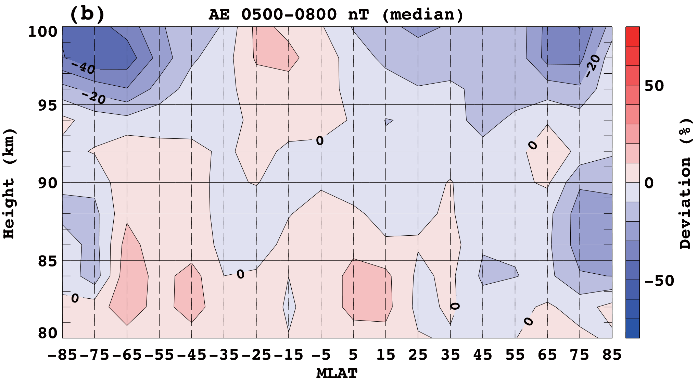March 2018 Issue
Research Highlights
Aurora-induced atmospheric composition change: Global sodium variation revealed by optical spectroscopic observations from the space
Aurora—northern lights/southern lights—light emission appears at high altitudes in the range 100-300 km the polar atmosphere. Auroras are caused by energetic particles precipitating from space near the Earth. It is thought that such auroral particle precipitation can induce many kinds of effects to the Earth's atmosphere.
Of interest are variations in the atmospheric composition induced by auroral particles. However, auroral responses of metallic species such as sodium (Na), which is distributed at between 80-110 km, are not well understood, and notably, there is no statistical survey available about this topic because of limited data.
Now, Takuo Tsuda at the University of Electrocommunications, Tokyo (UEC, Tokyo), and colleagues have statictically investigated global Na responses to the auroral activity utilizing six-years of optical spectroscopic observations from the space.
The researchers derived Na density data from the Na D line emission spectra obtained by an Earth-orbiting satellite that provide global data coverage and compared the Na density data with the auroral activity.
Their results showed that Na density can decrease through atmospheric chemical processes during high auroral activity.
The results indicate that the auroral particles can affect metallic species of the atmospheric composition. The findings imply an important link between research on auroras and atmospheric chemistry.




